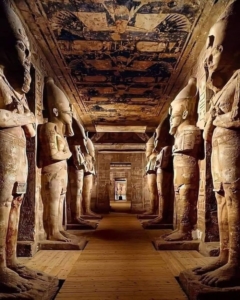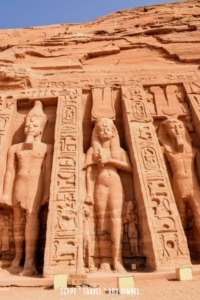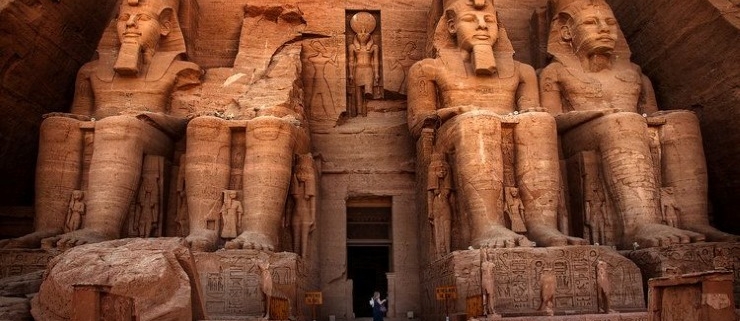What Makes Abu Simbel So Unique? The Story of the Temple That Moved
What Makes Abu Simbel So Unique? The Story of the Temple That Moved
Deep in southern Egypt, close to the border with Sudan, stands one of the most extraordinary monuments of the ancient world: Abu Simbel. Hewn directly into the sandstone cliffs over 3,000 years ago, this magnificent temple complex is far more than an archaeological wonder. It is a symbol of Egypt’s power, artistry, and resilience, and it carries a story so remarkable that it earned the title (The Temple That Moved).
The site consists of two monumental temples commissioned by Pharaoh Ramesses II around 1264 BCE. The larger temple was dedicated to the gods Amun, Ra-Horakhty, and Ptah, while also glorifying Ramesses himself as a divine ruler. Towering at the entrance are four colossal seated statues of the pharaoh, each rising more than 20 meters high, their sheer scale designed to awe onlookers and emphasize Egypt’s dominance over Nubia. Beside it stands the smaller but equally impressive temple of Queen Nefertari, one of the rare occasions in Egyptian history where a queen’s temple was given nearly equal importance to her king’s.

The awe-inspiring solar alignment that shines directly on the statue of Ramesses II
Beyond their size and artistry, the temples at Abu Simbel reveal astonishing scientific precision. Twice a year—on February 22 and October 22—the rising sun aligns perfectly with the temple’s inner sanctuary, illuminating the statues of the gods seated inside, while leaving ptah, the god of darkness, in shadow. This solar phenomenon demonstrates the advanced astronomical knowledge of ancient Egyptian architects and their ability to integrate science, religion, and politics into a single masterpiece.
Yet what makes Abu Simbel truly unique is not only its ancient origins but also its modern survival story. In the 1960s, the construction of the Aswan High Dam created a new challenge: the rising waters of Lake Nasser threatened to submerge the temples forever. To save them, Egypt and UNESCO launched one of the most ambitious archaeological rescue missions in history.
The relocation of the Abu Simbel temples to safeguard them from the rising waters of Lake Nasser.
Between 1964 and 1968, engineers, archaeologists, and thousands of workers from across the globe carefully cut the entire temple complex into massive blocks—each weighing up to 30 tons—before relocating them piece by piece to a site 65 meters higher and 200 meters further inland. The reconstruction was so precise that visitors today often cannot tell it was ever moved. This monumental effort was hailed as a modern engineering marvel and set the stage for international cooperation in cultural preservation. It was this incredible relocation that gave Abu Simbel its enduring nickname: (The Temple That Moved)

Today, Abu Simbel is not just a relic of the past but also a living testament to human ingenuity and global solidarity. It represents the grandeur of Ramesses II, the devotion to Queen Nefertari, the brilliance of ancient Egyptian astronomy, and the determination of modern nations to preserve shared heritage. It embodies love, politics, and resilience—surviving both the sands of time and the waters of the Nile.
Few monuments in the world carry such layered meaning. Visiting Abu Simbel is to experience both the glory of ancient Egypt and the triumph of modern preservation. It is history carved in stone, a cultural treasure that continues to inspire generations, and a reminder of why the Temple That Moved is unlike any other place on Earth.
Discover more about Abu Simbel with Axatours
Get ready for the ultimate Egyptian adventure! With Axatours, we take you on exclusive, expertly curated tours to Abu Simbel temples, designed to immerse you in the heart of Egypt’s rich culture and history. Our experienced team will guide you every step of the way, ensuring an unforgettable journey. For more details and exclusive offers, click the link here and start planning your dream trip!
Written by ATW August 2025.





